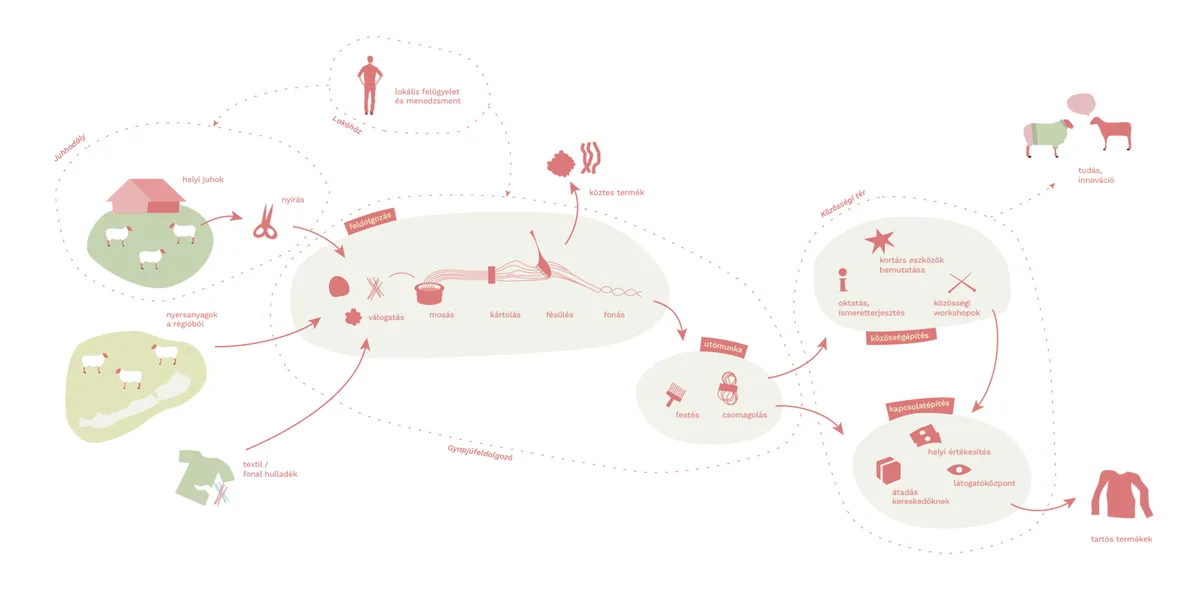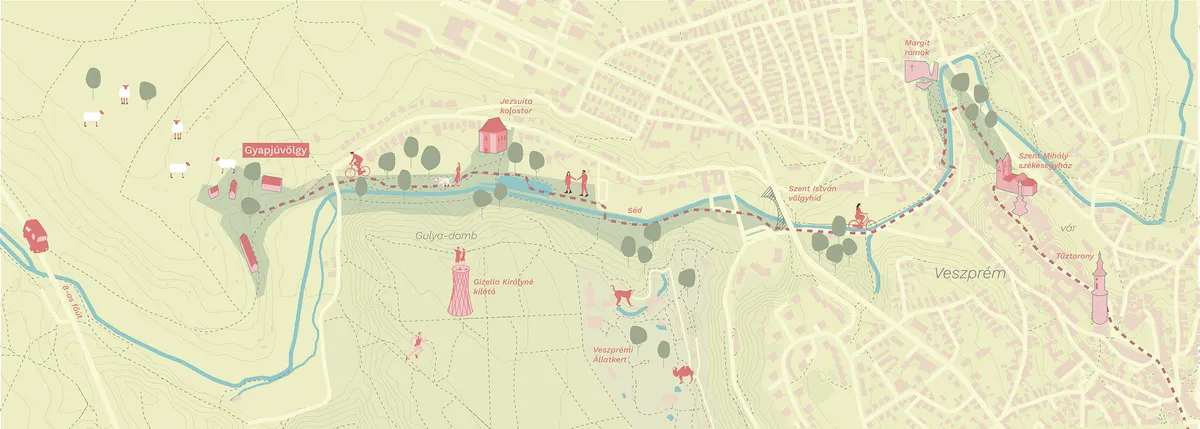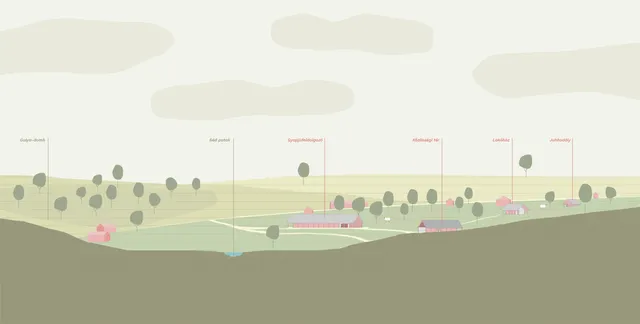
1/8

2/8

3/8

4/8

5/8

6/8

7/8

8/8

Author(s) / Team representatives
Eszter Gall
Profession
architect
Project location
Veszprém, Hungary
Area
650 m2
Project start date
September 2022
Project completion date
January 2023
Photo credits
Eszter Gall
Text presentation of the author/office in English
Eszter graduated from Budapest University of Technology and Economics in 2023, including semesters abroad in Spain and Australia. Aside from architecture, she enjoys knitting!
Project description in English
Gyapjúvölgy is an eco-wool hub blending tradition and innovation, dedicated to ecological and circular textile production and processing, situated in the valley of the Séd Creek in the western part of Veszprém. It serves as a knowledge base that preserves traditional technologies while embracing the latest innovations—promoting degrowth, the renaissance of wool production, and a love for cultural landscapes.
The surrounding area primarily comprised of orchards is filled with deteriorating buildings. The buildings of Gyapjúvölgy, scattered on the hillside do not initially present a cohesive unit to visitors—they blend into the familiar, informal landscape. This was an intentional choice, as the project's goal was not to 'tidy up' or disturb the somewhat neglected urban fringe character.
The complex consists of four elements: Visitors to the valley can observe the lives of local sheep hanging out at the sheep shelter and the landscape they help maintain, contributing valuable wool to the manufacturing process. If they can see a cosy fire going in the hut the shepherd can be found at home. They can peek through the window of the woollen mill, where local and regional wool and textile waste is processed to create unique local yarns and other products. They can visit the community workshop space where knitting clubs and enthusiasts of the latest weaving machines gather. Authentic Veszprém clothes and yarns created here can be taken home to spread the word about the rebirth of sustainable fashion.
The four buildings adhere to design principles prioritizing simplicity, use of local resources, and minimal environmental impact, creating a sincere aesthetic that mirrors their surroundings. The generative form is driven by external and internal forces, using an established architectural toolkit. The selection criteria for materials and technologies prioritises simplicity, adaptability, easy and quick assembly, builds on local labour and resources, repairability, and minimal environmental impact throughout the entire lifecycle. The raw materials and lack of refined finishes create a sincere, found-character aesthetic, where the appearance of the houses draws on their environment, not from an aesthetic desire.



